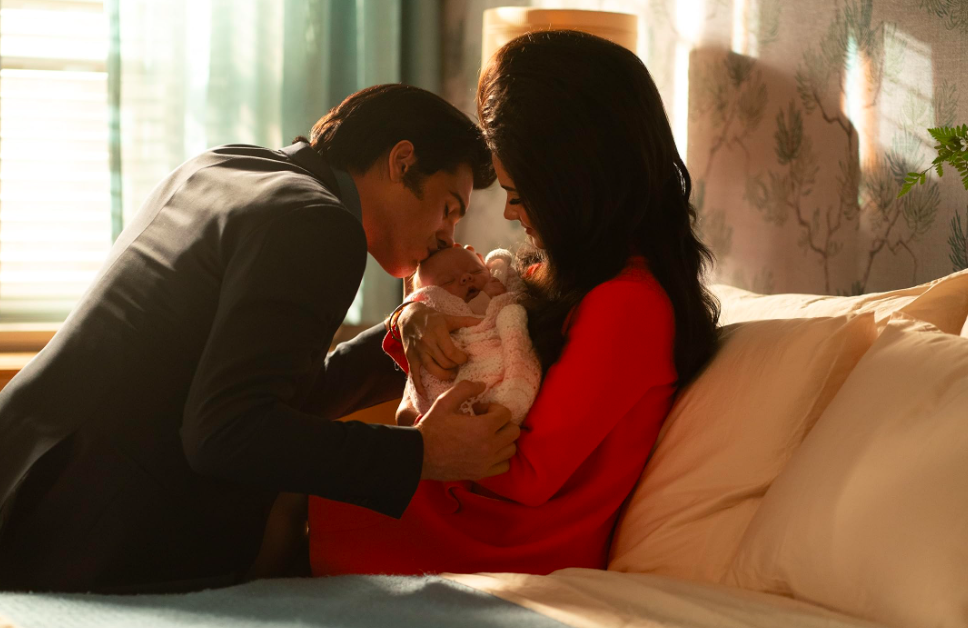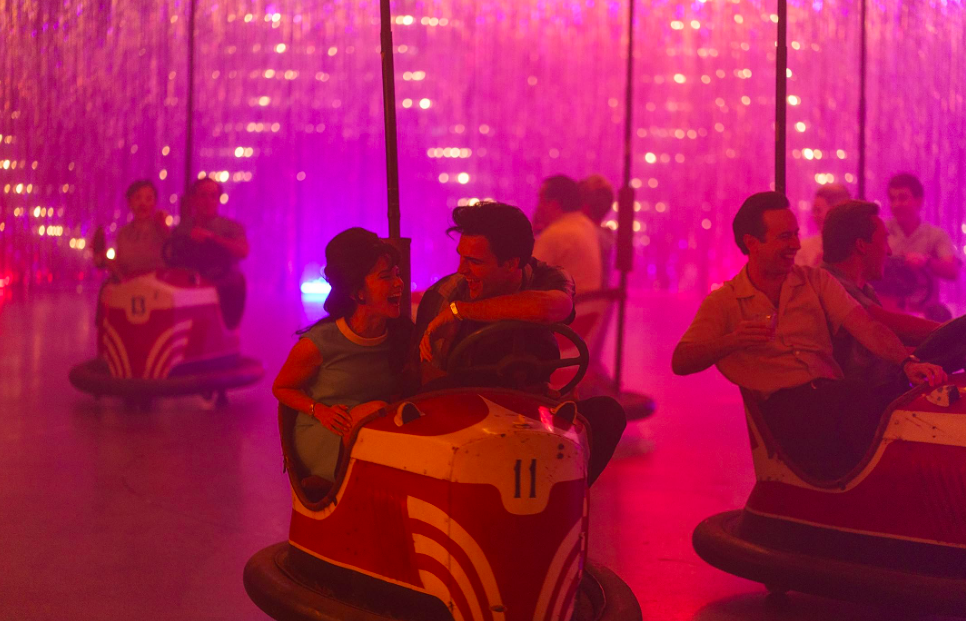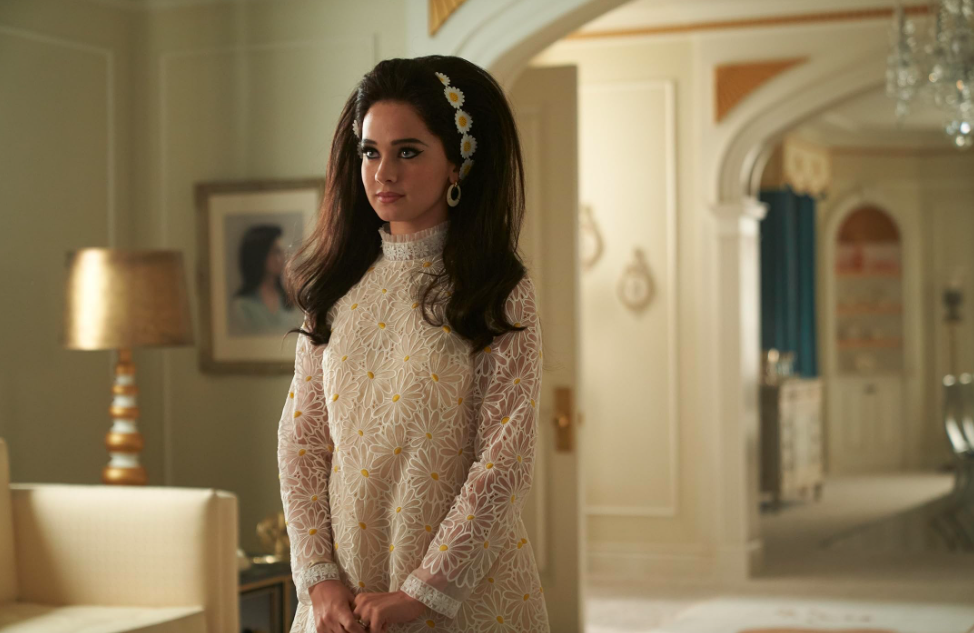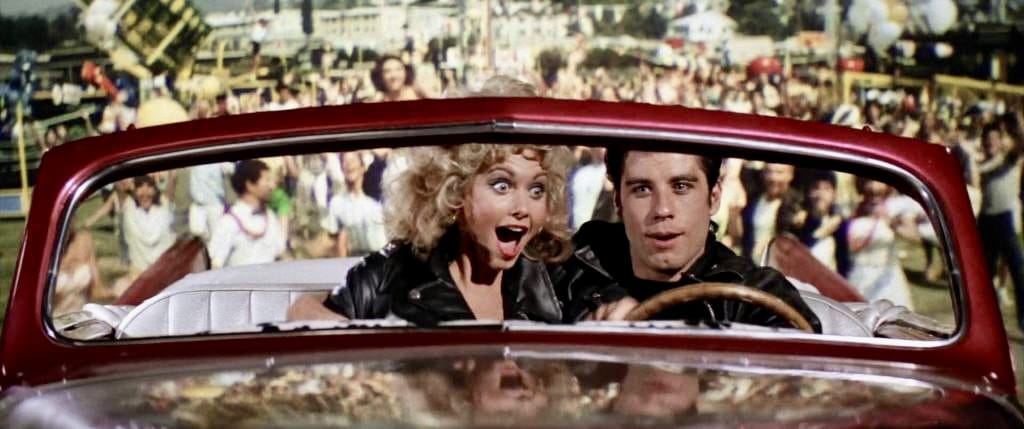By Alannah Mylechreest, Second Year, English and German
Sofia Coppola graces the silver screen again, this time with a biopic on Priscilla Presley (Cailee Spaeny) in the eponymous Priscilla (2023), spanning from her first meeting with Elvis Presley (Jacob Elordi) to their eventual divorce. Being beautifully shot yet simultaneously tragically told, it is an effective portrayal of an abusive and emotionally manipulative relationship that sheds new light on ‘the King of Rock and Roll'.

The film begins with a 14-year-old Priscilla meeting Elvis, ten years her senior, at a party in West Germany where her father is stationed. From the moment they meet their relationship is deeply uncomfortable to the viewer due to their notable and noticeable age gap - this is depicted in the film not only by the significant height difference between Spaeny and Elordi, but also through Spaeny’s impressive performance generally; she speaks with a soft, youthful voice, and carries herself in an unconfident and childlike manner that is particularly striking when in adult locations, such as a Las Vegas casino.
It should be noted that Priscilla is not intended to be about Elvis as a pop star, instead showing a darker side to him in his personal life as he emotionally, physically and eventually sexually abuses Priscilla. In one of the most memorable scenes, he suggests to his heavily pregnant wife that they separate; it is arguably this moment where we can see that Priscilla realises how unstable their relationship is, and what the audience has known for a while begins to dawn on her.

The cinematography in the film is excellently done, creating a claustrophobic feel by having its scenes often set in the domestic sphere of Graceland, a space where Priscilla is trapped. Another interesting technique that Coppola deploys is the multiple sequences featuring close-ups of objects, perhaps representative of the rampant consumerism existing in the era in which the film takes place. This is present near the beginning when the 60s ephemera is used to denote the passing of time, as well as the shots of newspapers, beauty products, and plane tickets that look like they were ripped straight out of that decade. This technique also becomes more disturbing when it highlights Priscilla’s loss of innocence through the combination of the girlish and sinister, with shots of baby-pink manicures holding gambling chips, LSD being applied onto sugar cubes, and guns turning into matching accessories for dresses.

It is difficult not to draw comparisons between Coppola’s release and the other recent depiction of Elvis on screen, Baz Luhrmann’s Elvis (2022). The films are vastly different however in both their tone and approach, with Priscilla featuring more muted colours and a slower pace, for instance interspersing emotional scenes with short sequences of Priscilla walking along the hallways in school or playing on the swings with her daughter. Notably, Priscilla does not feature any songs by Elvis, a choice that I admire as I believe this would have detracted from the film’s plot and overall intentions. What unites Coppola and Luhrmann’s biopics is their dreamlike quality; Elvis is a manic fever dream, but Priscilla is the teenage dream of a young girl falling in love that becomes more and more disconcerting.
If you are a fan of Coppola’s filmography or the female perspective of the past, then I can wholeheartedly recommend this film to you.
Will you be watching Priscilla?









